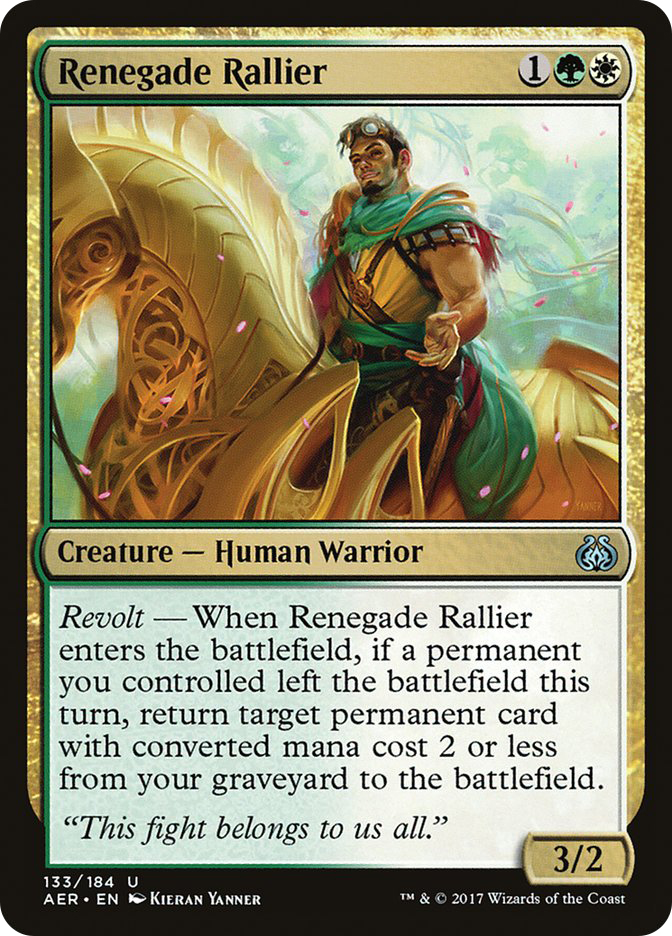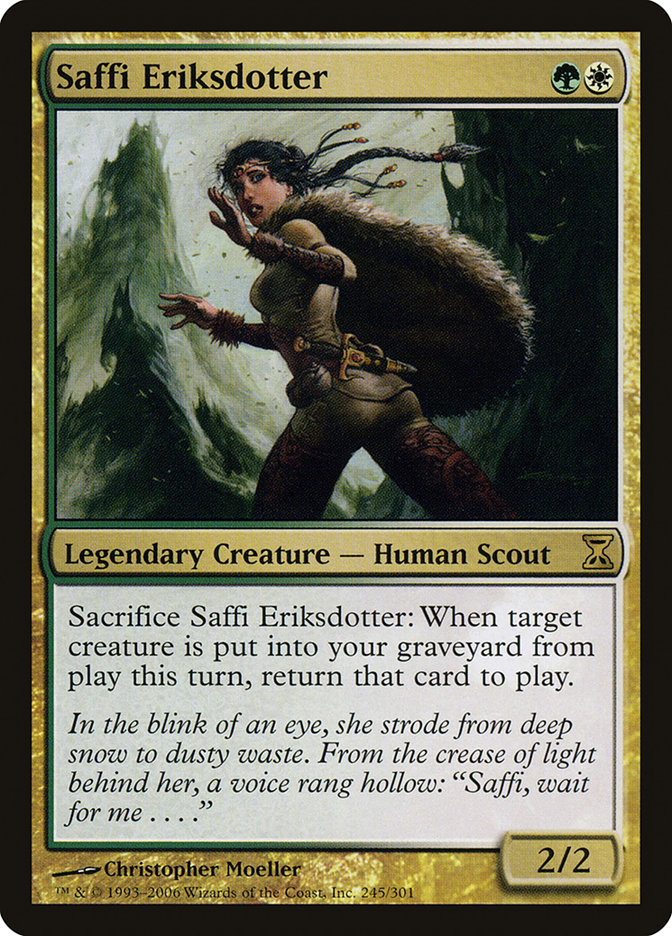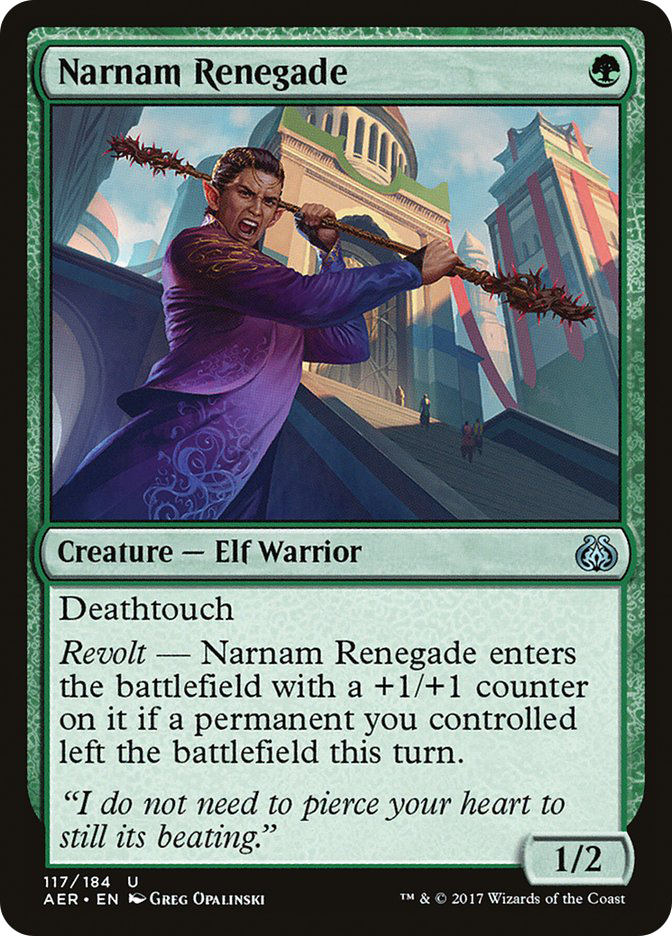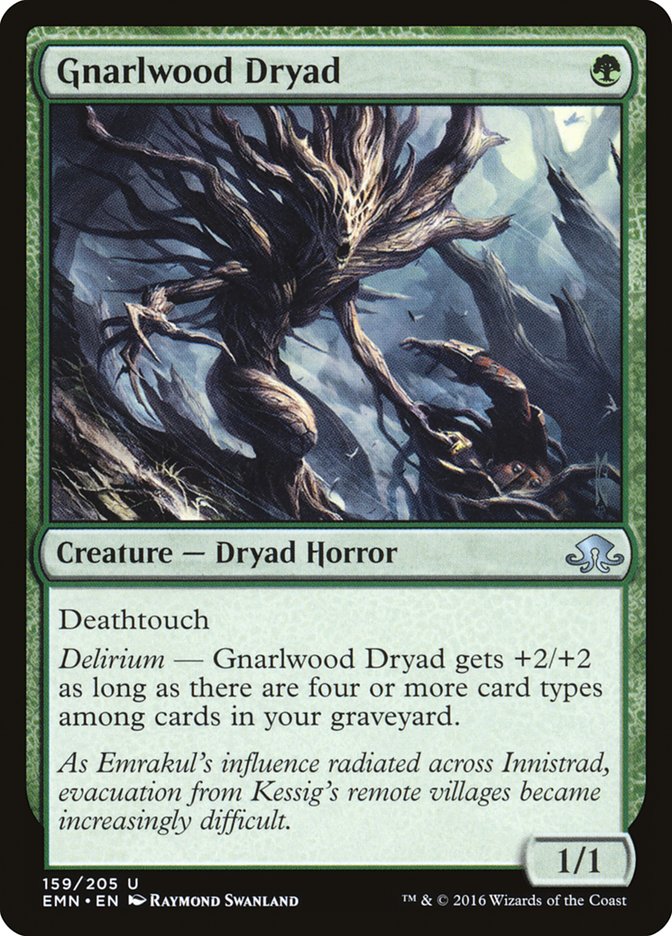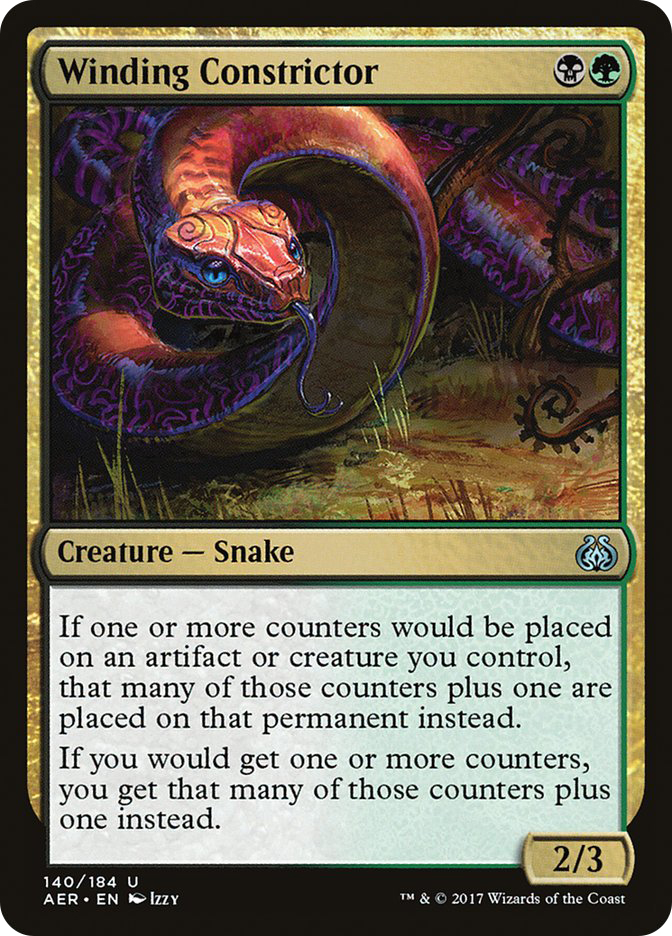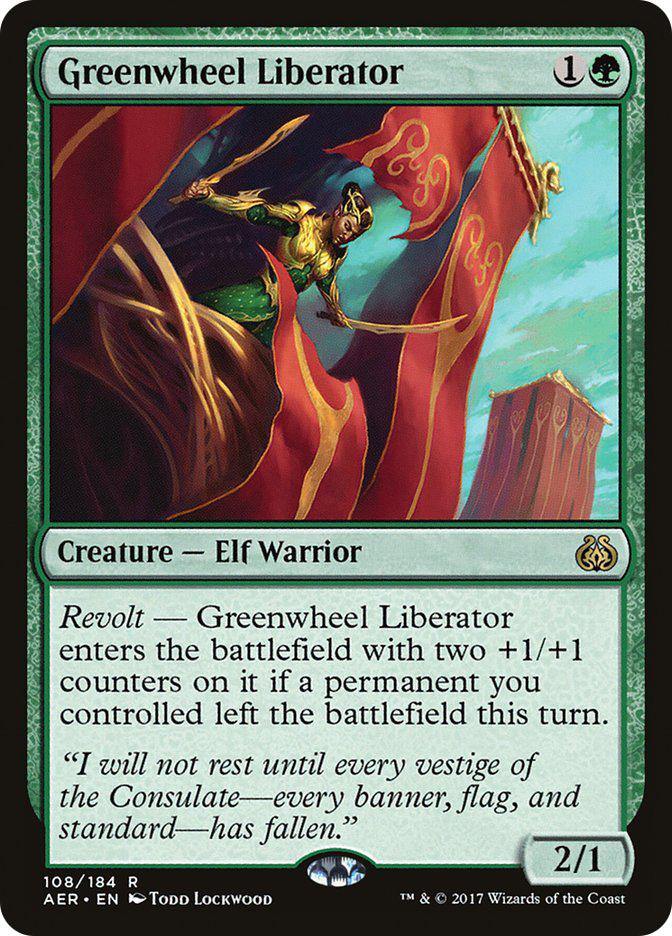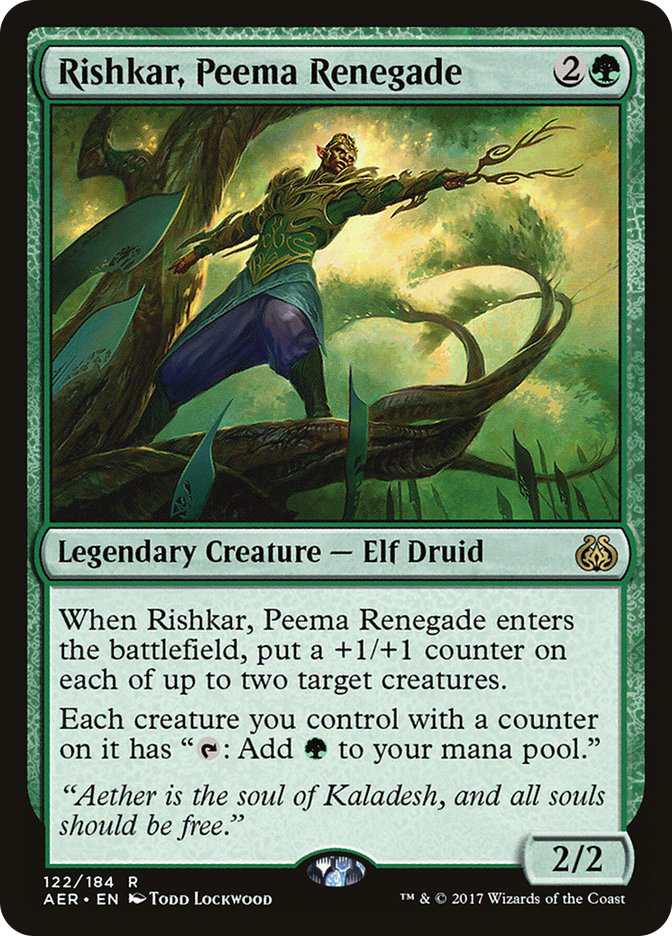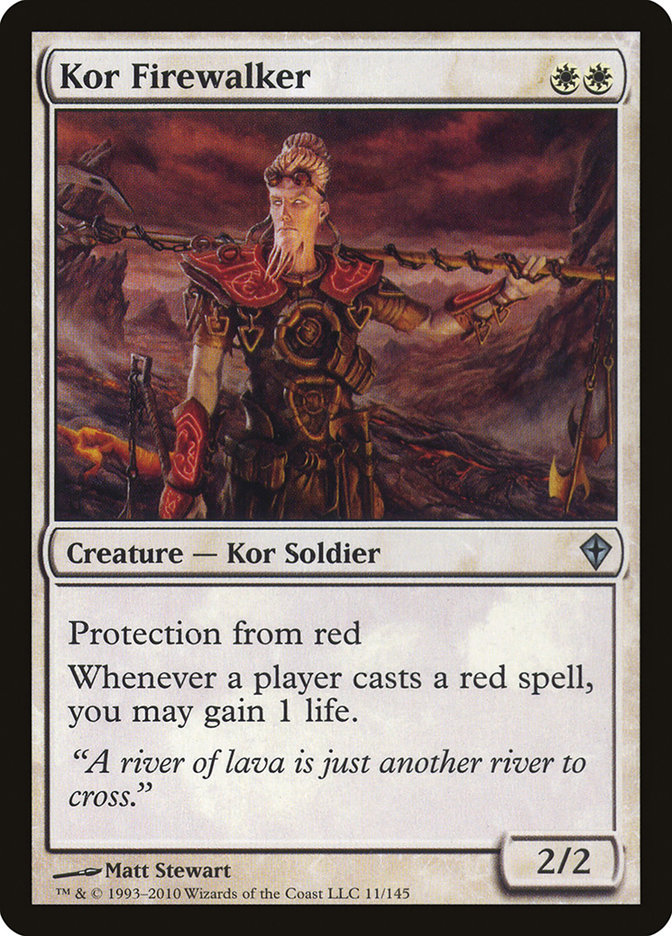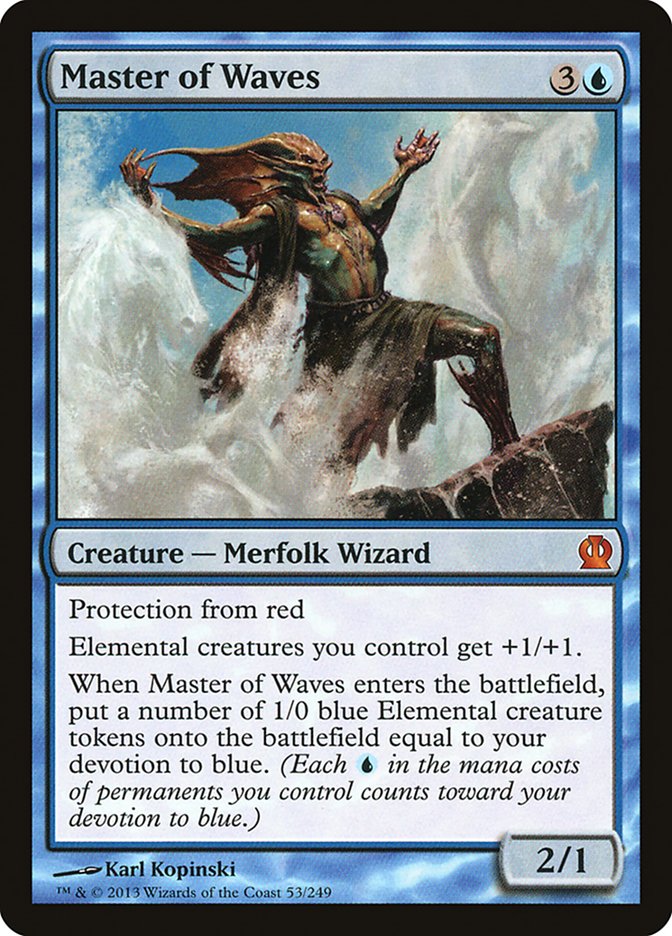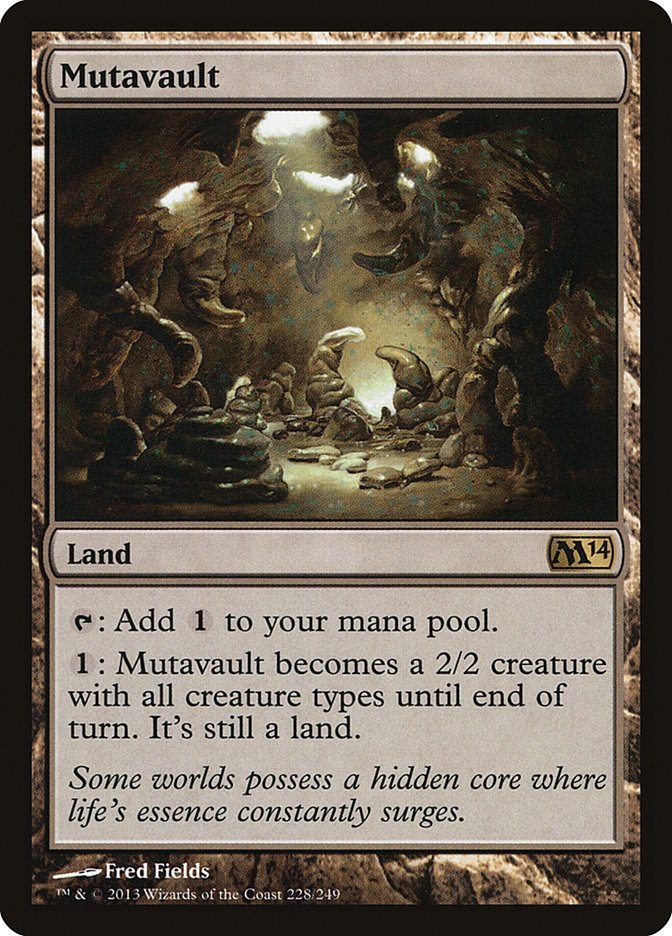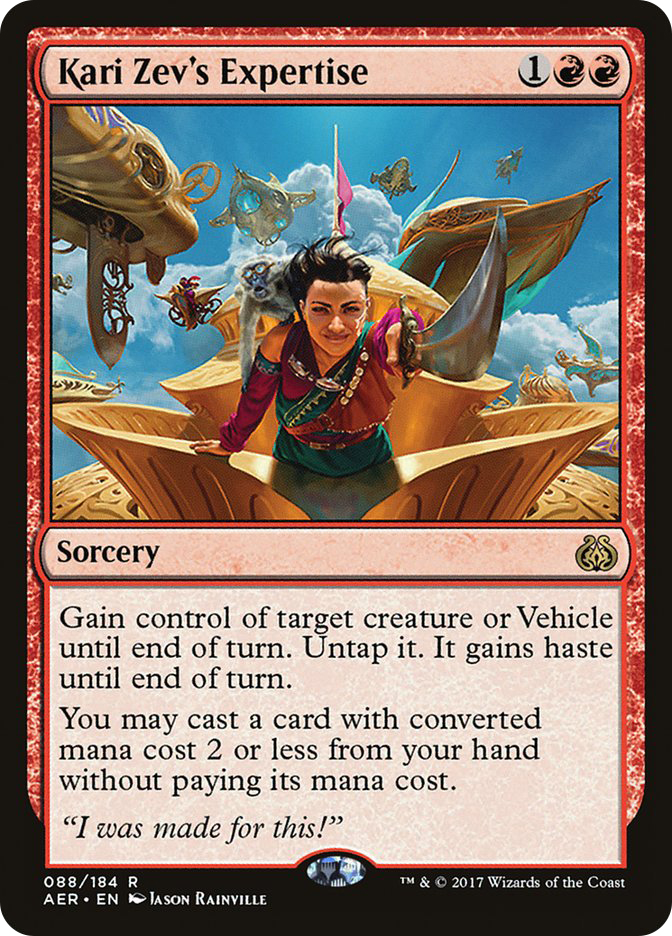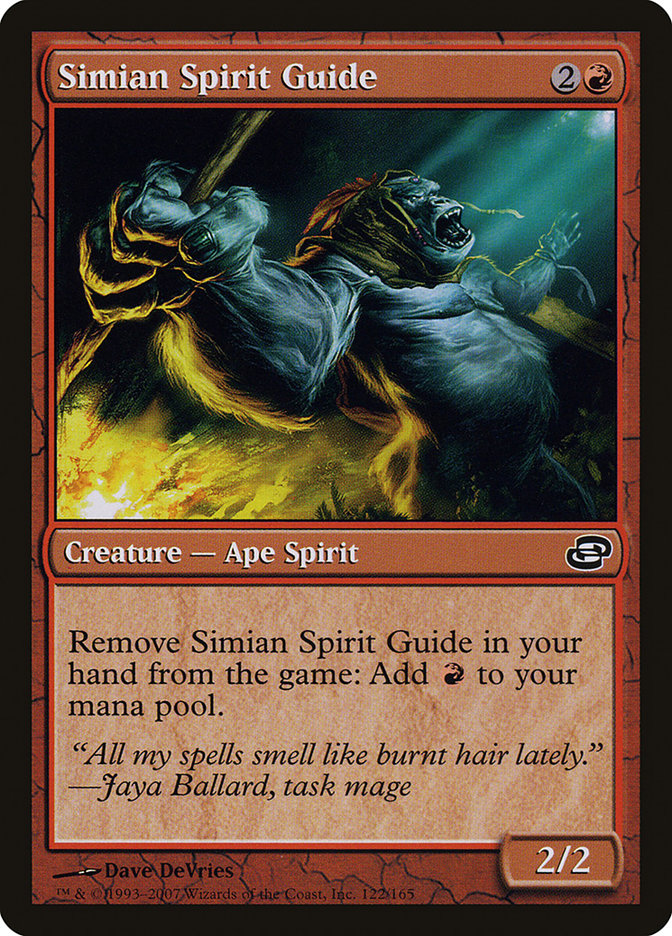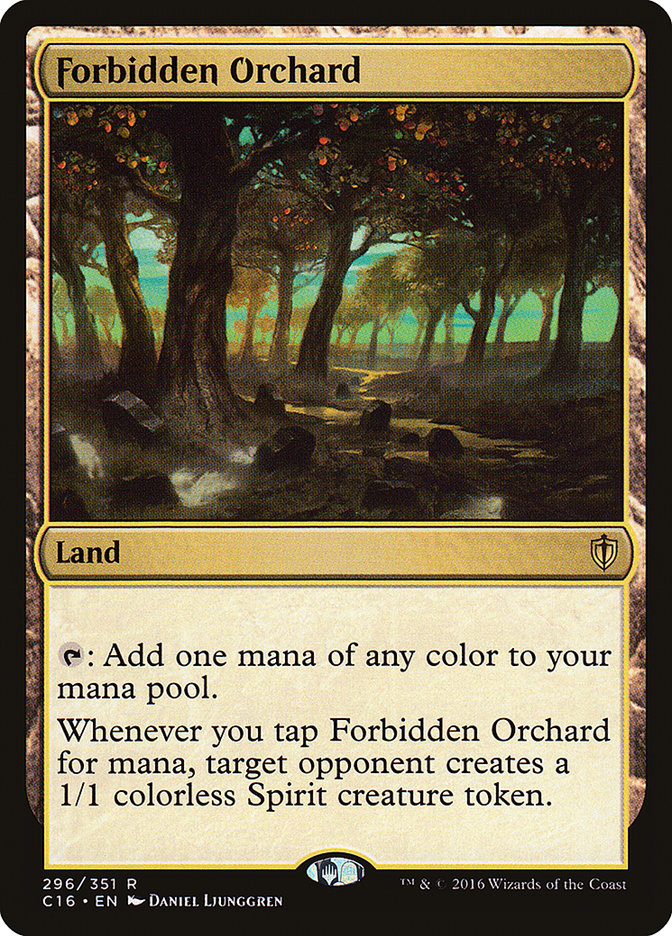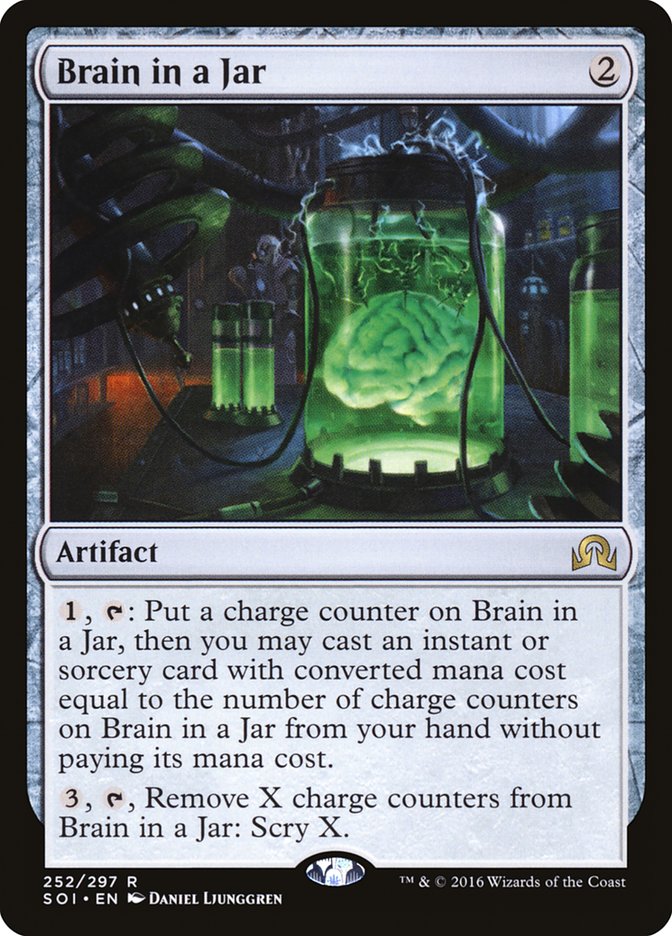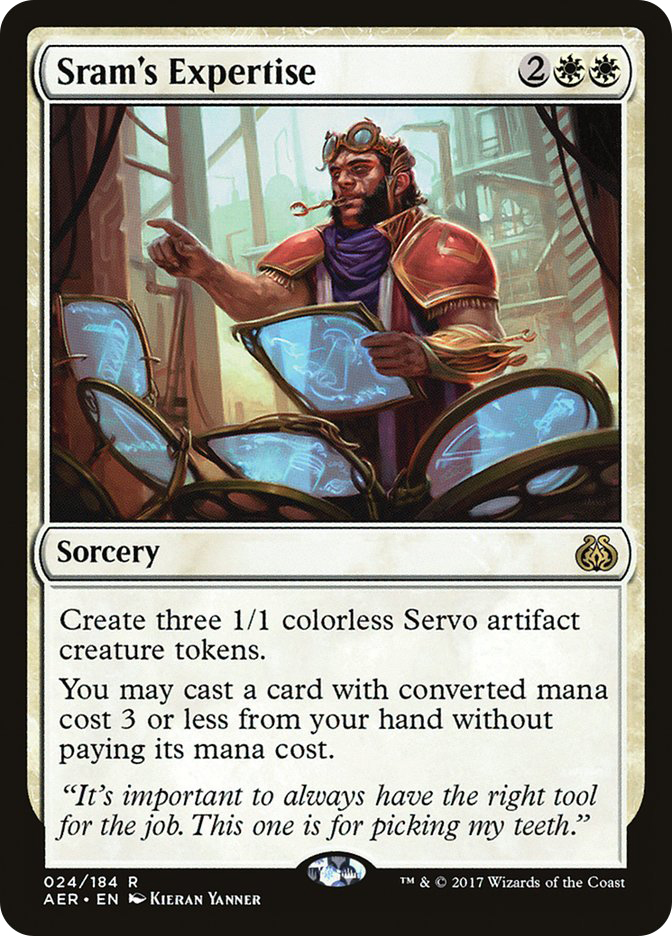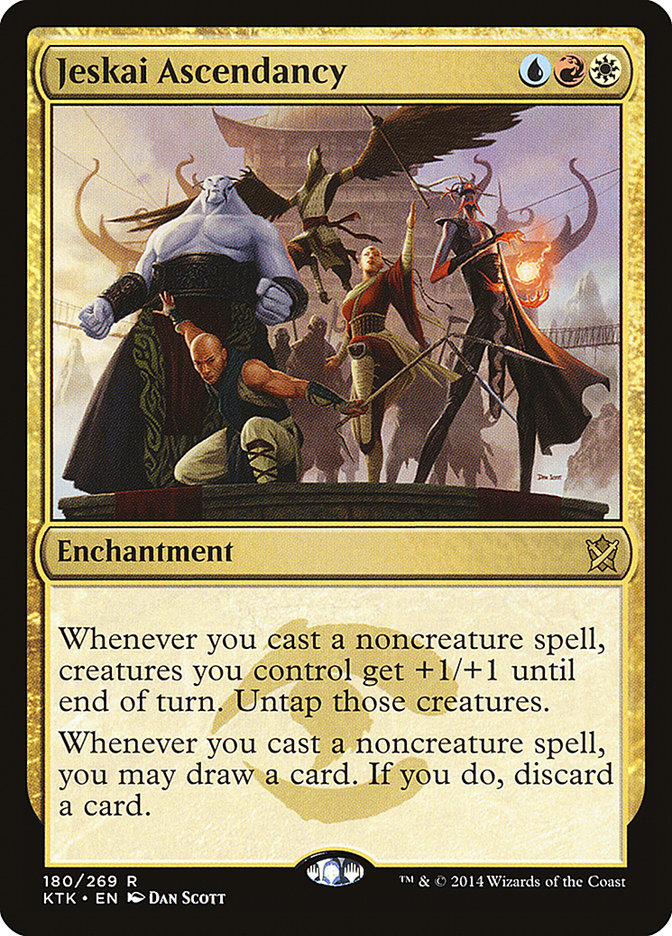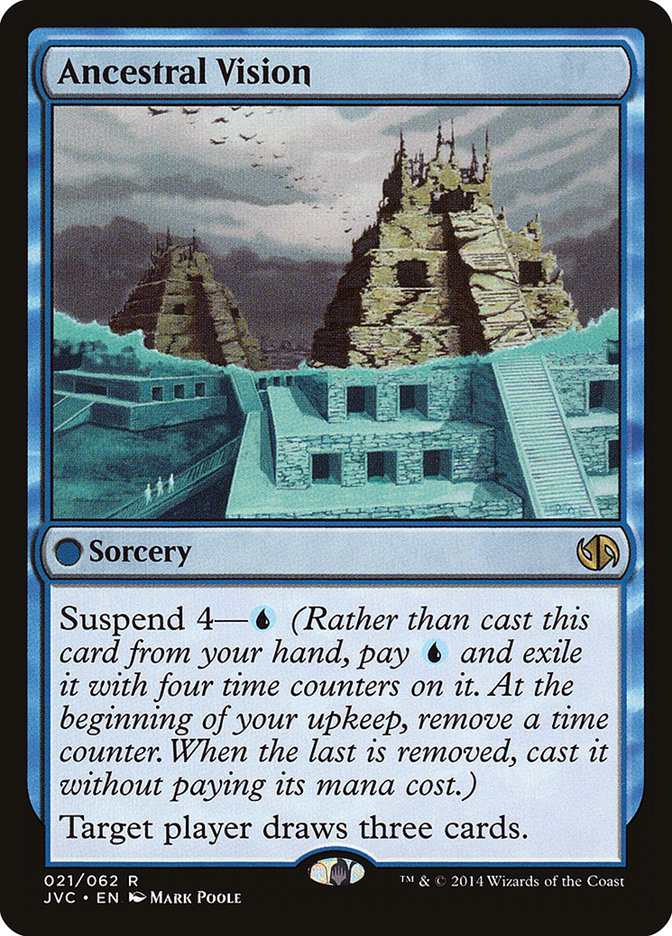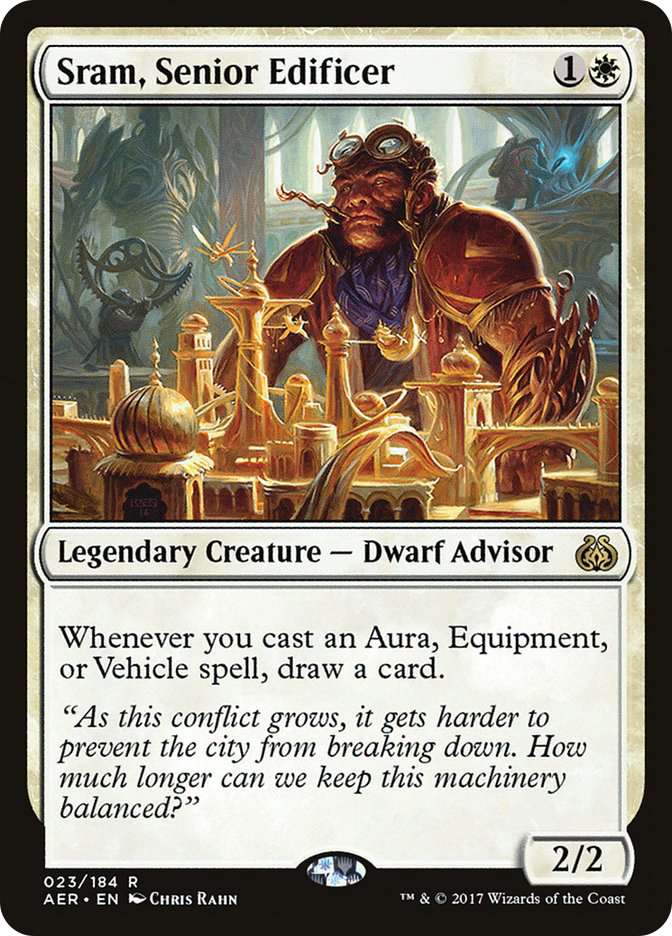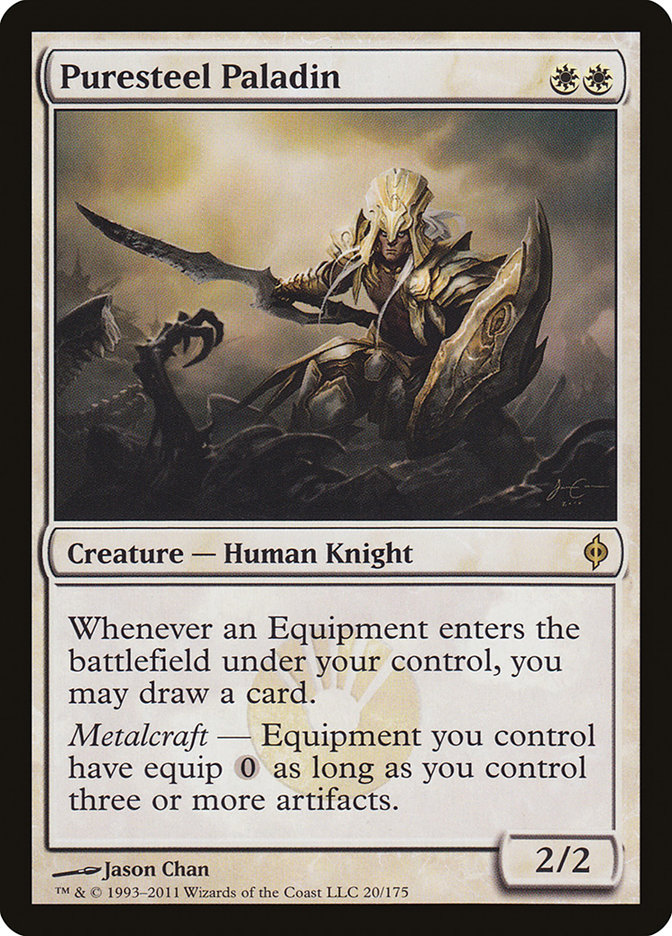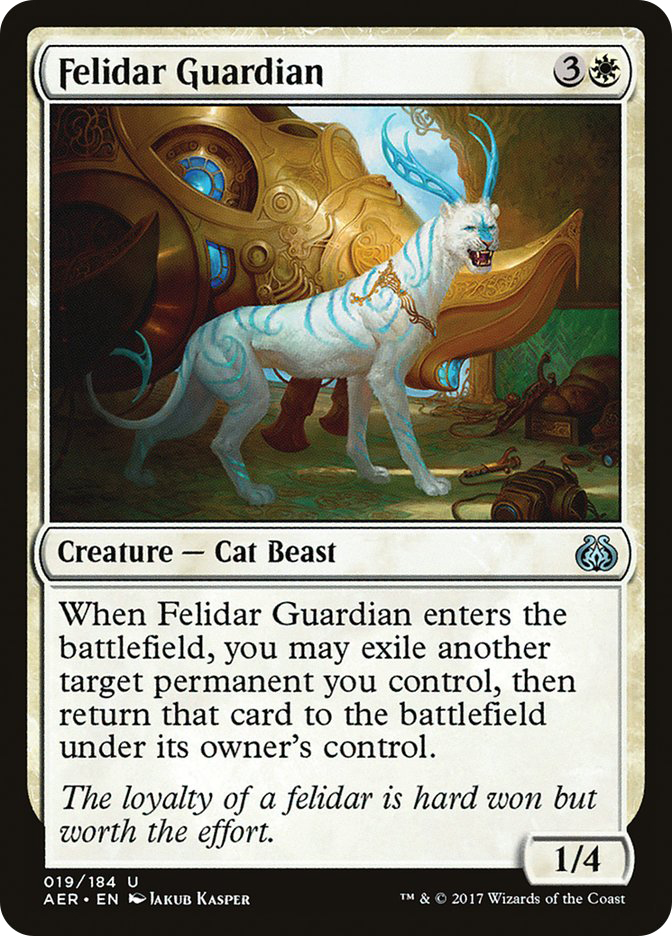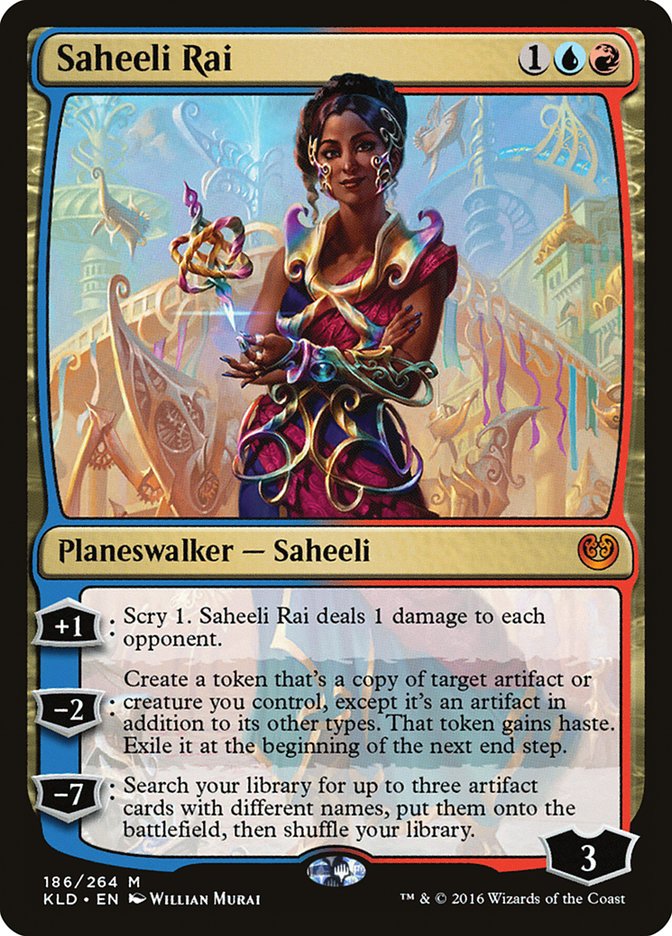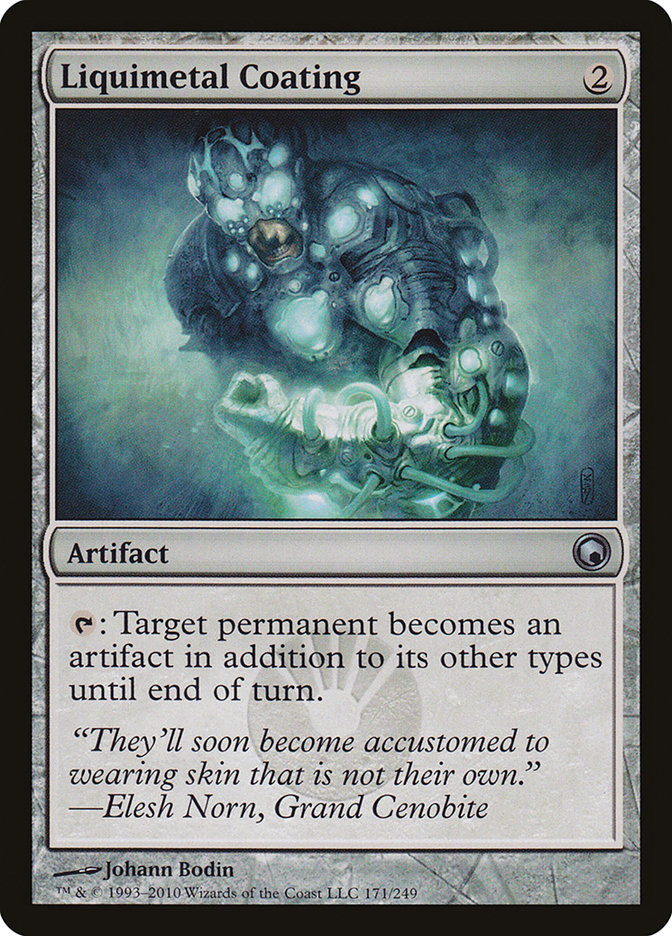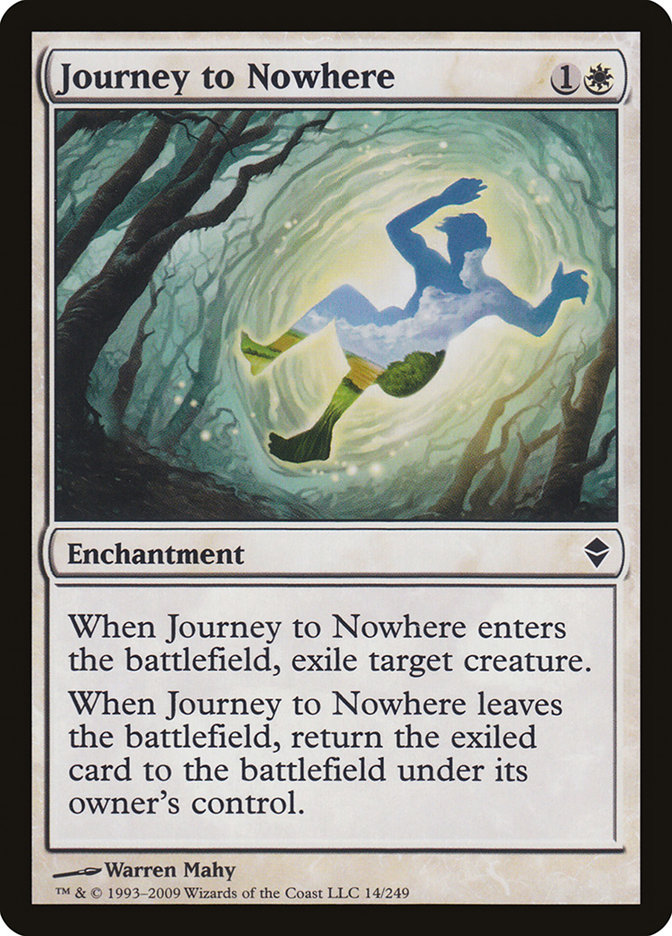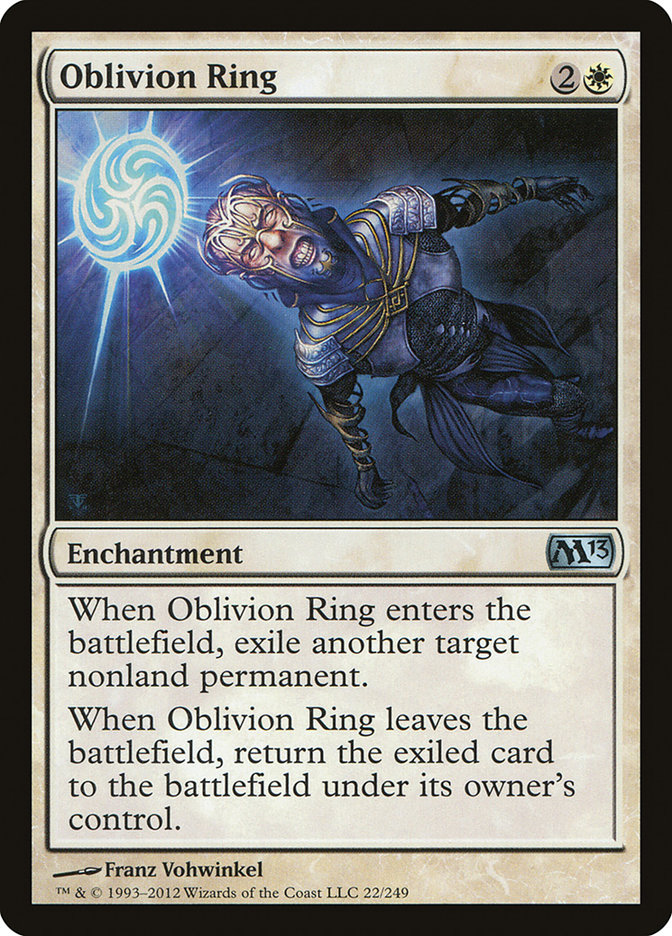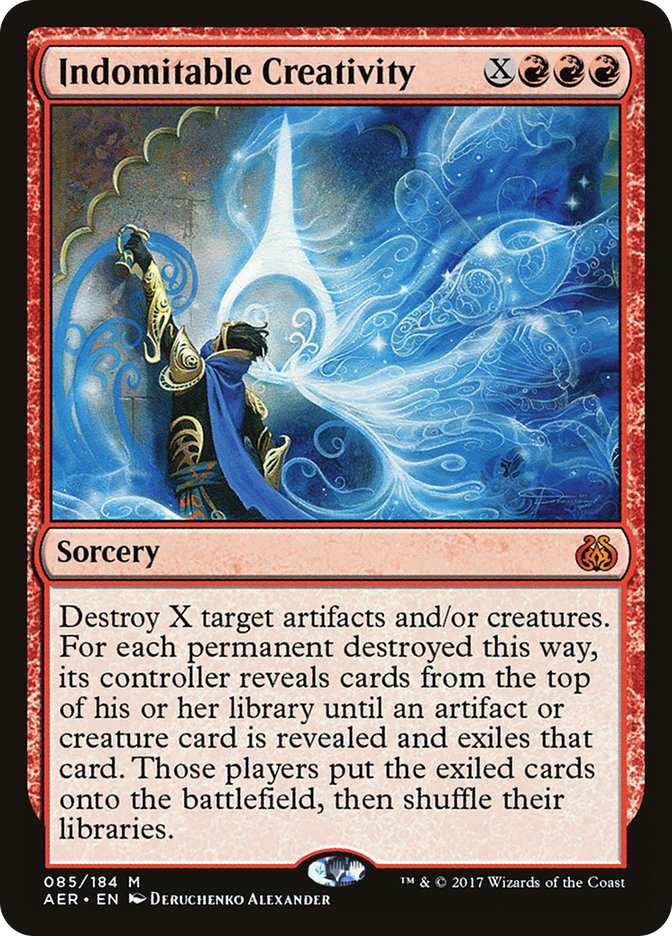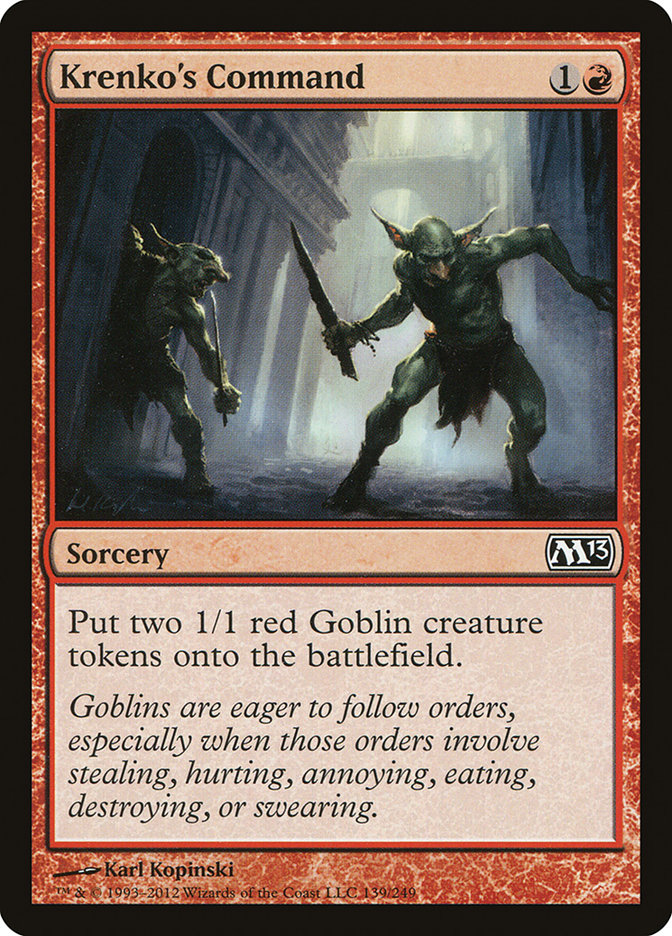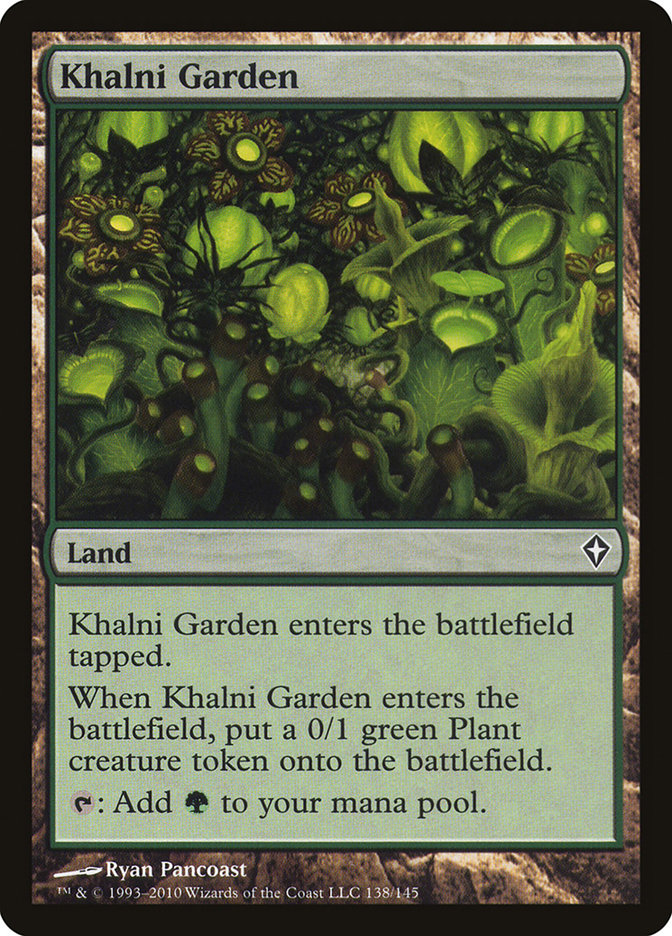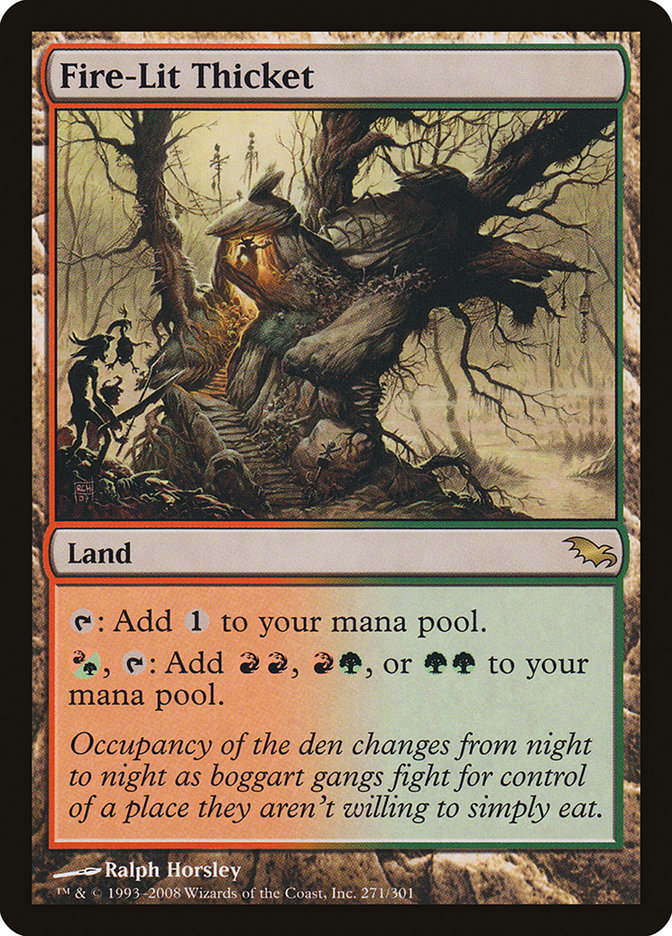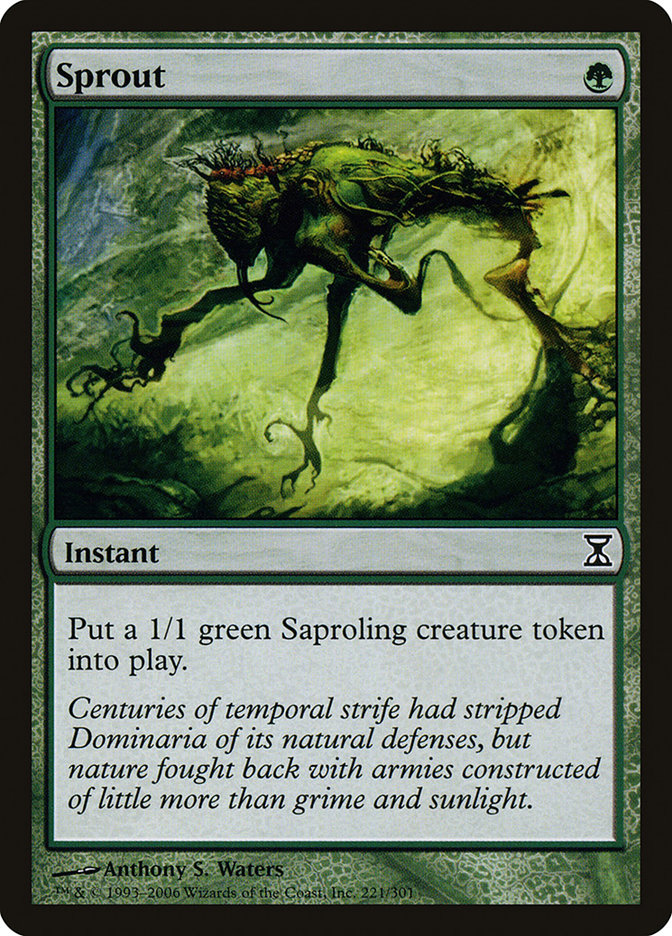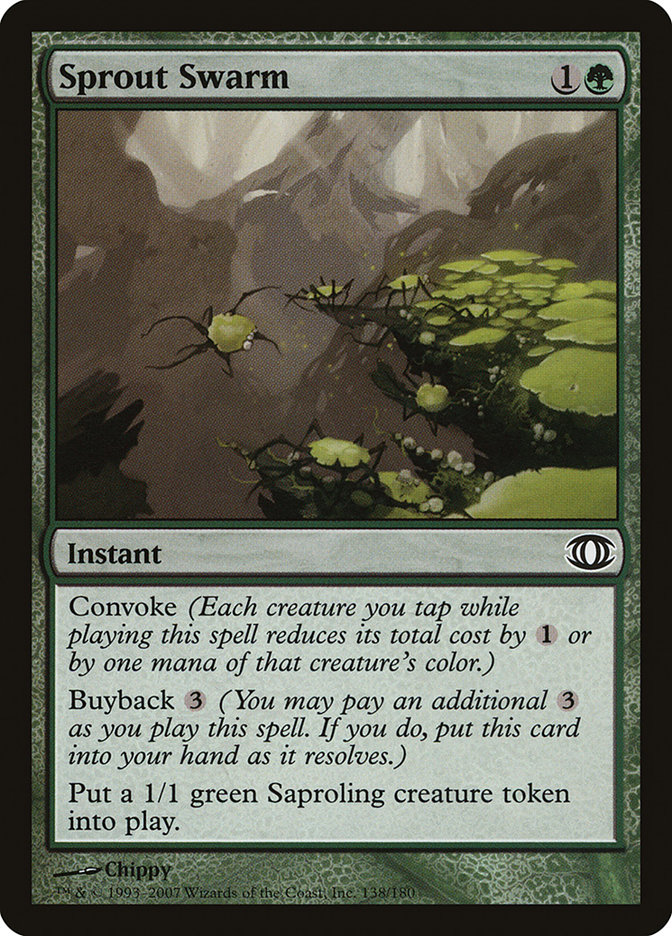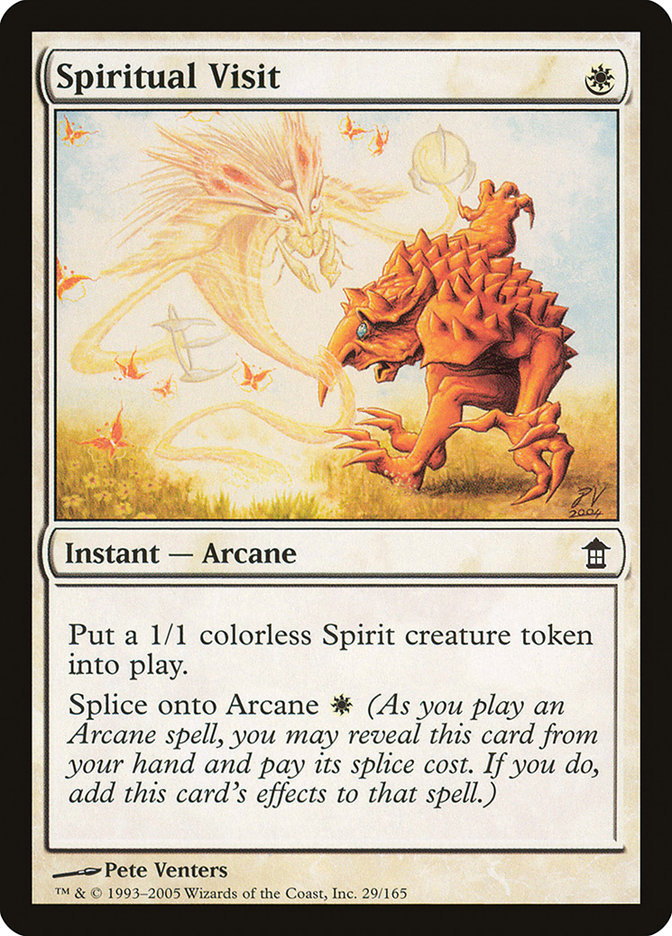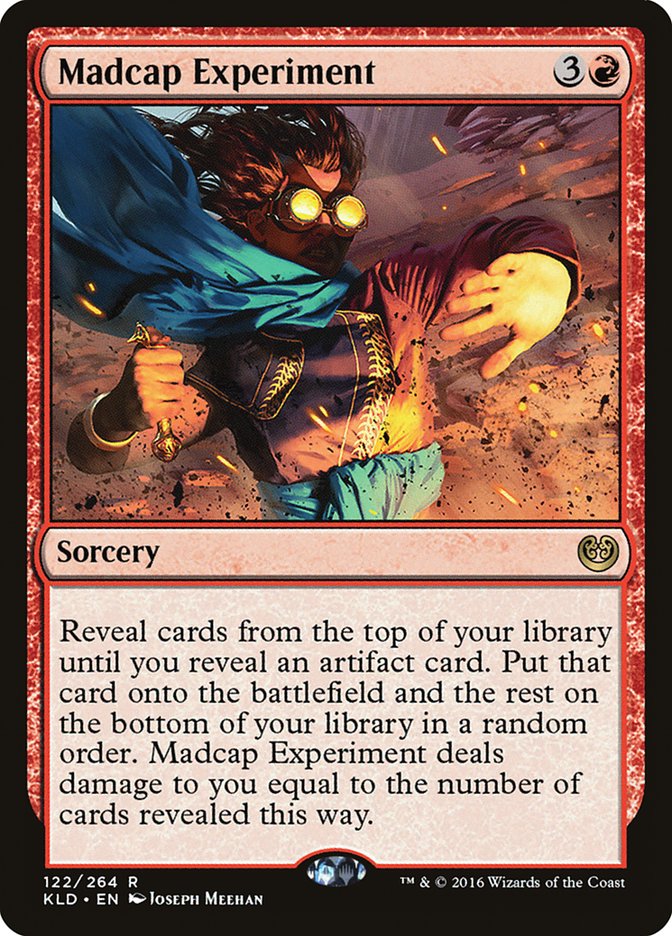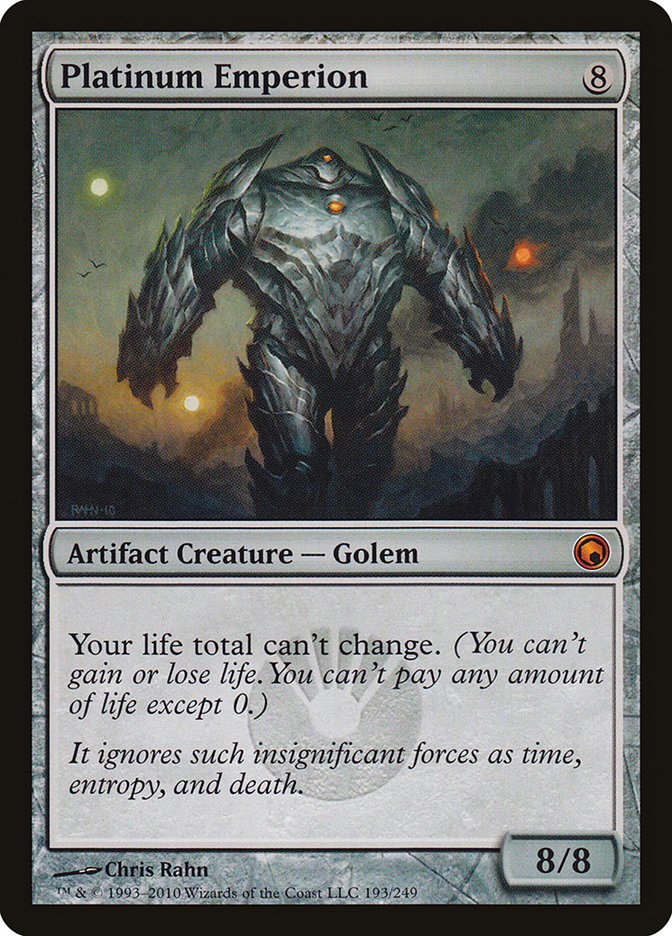Brewing with new Magic sets is one of my primary methods of coping with anxiety and depression. Sometimes, it’s just really nice to have purpose, objectives, and stuff to think about.
Modern is a perpetually rich landscape to explore for a true brewer, as there are just so many more possible interactions to explore than there is time in the day. There is a certain artistry to making new Modern decks, and while it is quite difficult, it’s also extremely satisfying when you pull it off.
While most of the focus has been on Standard recently, Aether Revolt has already started to make an impact on Modern. For starters, Fatal Push has wasted no time living up to the hype.
While you could argue a case for Dismember being a “black” one-mana removal spell worthy of being listed alongside Lightning Bolt and Path to Exile, Fatal Push is both stronger and actually black (instead of secretly colorless).
Kirk Rhoades made excellent use of Fatal Push in his IQ-winning Abzan list, giving him a second one-mana removal spell to use alongside Path to Exile (and one that’s more appealing to play on turn 1 or 2 without ramping the opponent).
Creatures (16)
Planeswalkers (3)
Lands (22)
Spells (19)

Renegade Rallier is a pretty interesting addition since fetchlands make it so easy to trigger revolt.
Frequently we’ll want to get back our Dark Confidant or Tarmogoyf that was Fatal Pushed; however, it’s important to remember that we can get back the fetchland we used to trigger it in the first place. This lets us curve right into Lingering Souls and flash it back, since it puts the land directly onto the battlefield.
Renegade Rallier can be used a variety of ways in Modern. It seems like people are really into combining it with Saffi Eriksdotter, trying to set up some kind of a loop with a sacrifice outlet.
Maybe that’s good enough, but it’s not clearly better than the other stuff going on in Melira, Sylvok Outcast / Anafenza, Kin-Tree Spirit decks. I’m pretty sure I would use Renegade Rallier in such decks; I’m just not sure the whole Saffi Eriksdotter combo is worth it. It’s not like we’re maxed on Meliras or Anafenzas.
Creatures (29)
- 4 Birds of Paradise
- 2 Eternal Witness
- 1 Wall of Roots
- 1 Orzhov Pontiff
- 4 Kitchen Finks
- 1 Murderous Redcap
- 3 Noble Hierarch
- 4 Viscera Seer
- 1 Spellskite
- 2 Melira, Sylvok Outcast
- 1 Scavenging Ooze
- 1 Voice of Resurgence
- 2 Anafenza, Kin-Tree Spirit
- 2 Renegade Rallier
Lands (23)
Spells (8)

One other possible home is some sort of G/W Aggro deck. While the correct way to build such a deck is probably a little more hate-bears-oriented, Wilt-Leaf Liege decks are something of a guilty pleasure of mine.
For instance:
Creatures (29)
- 4 Wilt-Leaf Liege
- 4 Knight of the Reliquary
- 3 Qasali Pridemage
- 4 Dryad Militant
- 2 Loxodon Smiter
- 4 Voice of Resurgence
- 4 Fleecemane Lion
- 4 Renegade Rallier
Lands (23)
Spells (8)

Getting back to Fatal Push, however, one has to wonder if the white is even necessary, in the above Abzan deck. For instance, what about something like:
Creatures (15)
- 4 Dark Confidant
- 4 Tarmogoyf
- 1 Kitchen Finks
- 1 Scavenging Ooze
- 1 Tasigur, the Golden Fang
- 1 Kalitas, Traitor of Ghet
- 1 Tireless Tracker
- 1 Gnarlwood Dryad
- 1 Grim Flayer
Planeswalkers (2)
Lands (21)
Spells (22)

I’ve long been a fan of Mishra’s Bauble with Tasigur, the Golden Fang, and the synergy with fetchlands is sweet. The addition of artifact as a card type to help support Traverse the Ulvenwald and Tarmogoyf is actually super-sweet. What’s super-double-sweet, however, is using Mishra’s Bauble to ensure you always have revolt active, whether for Fatal Push or Narnam Renegade!
Fatal Push, by itself, is not really that compelling of a reason to care about triggering revolt beyond making sure you’ve got a few fetchlands. Most of the targets (at least at the moment) all cost two or less. Narnam Renegade helps move the needle a little, though. After all, Kird Ape is already playable; giving it deathtouch is nice.
That said, Gnarlwood Dryad is legal, too.
Okay, sure maybe a relatively straightforward Golgari deck isn’t enough to get us into Narnam Renegade, but it does have at least one major advantage over Gnarlwood Dryad (besides the fail state being a 1/2 deathtouch, rather than a 1/1 deathtouch). It gets a +1/+1 counter.
Creatures (25)
- 3 Scavenging Ooze
- 4 Experiment One
- 4 Avatar of the Resolute
- 3 Greenwheel Liberator
- 4 Winding Constrictor
- 3 Rishkar, Peema Renegade
- 4 Narnam Renegade
Planeswalkers (3)
Lands (22)
Spells (10)

The prospect of getting to play both Hardened Scales and Winding Constrictor makes talking about a dedicated +1/+1 counter deck a much more viable exploration.
Winding Constrictor obviously does pretty filthy things with all of our +1/+1 counters, but there are more good +1/+1 counter options than we’ve got room for. Are we supposed to be playing Hangarback Walker? Walking Ballista?
I could easily imagine it being crazy to not max on both, but I could also imagine them being too slow. Walking Ballista is particularly interesting to me, as it seems like it might be pretty effective against Affinity and Infect.
Greenwheel Liberator is pretty reliably a 4/3 for two, but that’s not exactly a convenient set of stats. We really need a Hardened Scales or Winding Constrictor to give us enough of a boost to make our investment attractive. Even still, Fatal Push is really going to mess with this type of plan. I would recommend Walking Ballista instead.
Rishkar is just a stronger card in the abstract than most people realize, but one of the reasons I like him here is his pseudo-haste. Even if they try to kill him in response to his trigger, you can tap whatever creatures you have on the battlefield that already have +1/+1 counters for mana for a nice tempo boost. Besides, costing three instead of two might actually make things awkward for people some of the time.
The other immediate and great home for Fatal Push is in various U/B/x decks, either alongside Lightning Bolt or in place of it. For instance, Ryan Aucoin’s Grixis Delver list is a pretty straightforward update using Fatal Push as a mostly better Terminate.
Creatures (13)
Lands (20)
Spells (27)

Personally, I would probably want the fourth Fatal Push before the second Terminate, but I guess that slot might be flexible. One of the interesting consequences of Fatal Push is how much it completely changes the relationship between Grixis and Kor Firewalker.
Obviously, Kor Firewalker is primarily used as an anti-Burn measure; however, the card did get extra mileage by way of being such a resilient threat against Lightning Bolt, Terminate, and Kolaghan’s Command. Now, with easy access to lots of Fatal Push, Kor Firewalker is a lot less impressive of a threat to drop against a Grixis deck.
Likewise, Merfolk’s biggest weapon against Grixis was previously Master of Waves. Now, however, it’s not even a big deal. In fact, Fatal Push is so strong, there’s a lot less pressure on control decks to play red and/or white. For instance, you could do something like this:
Creatures (7)
Planeswalkers (1)
Lands (24)
Spells (28)

I am particularly excited to work with Tasigur, the Golden Fang in this new Fatal Push-centric world. Obviously, Fatal Push is a boost to Tasigur decks themselves, but I also think that creatures with converted mana cost five or more have gained a substantial amount. People are cutting Terminates for Fatal Pushes. People are playing fewer Paths.
Another possible direction we could with U/B Control is to incorporate Spellstutter Sprite and Mutavault. Faeries? Not really, I don’t think; or, rather, I am not sure Faeries needs to be so dedicated as to use Bitterblossom.
I think one of the biggest things holding Faeries back has been the slavish adherence to the style of Faeries decks used years ago. There’s too much cheap removal to play Mistbind Clique, and there’s too much aggression and fast combo for Bitterblossom to be insane. There’s even Abrupt Decay to compete with. That said, it might be a sweet sideboard card against midrange and Affinity.
For instance, you could just:
Creatures (12)
Lands (24)
Spells (23)

One other subtle strength to Spellstutter Sprite is its effectiveness against no-cost cards like Ancestral Vision, Living End, and Restore Balance. The printing of the Expertise cycle, particularly Kari Zev’s Expertise, may lead to an increase in interest in Time Spiral “no cost” cards. Having new ways to cheat them without having to wait is a big deal.
That said, the first Kari Zev’s Expertise deck to Top 8 a Modern event was looking to abuse an even more disgusting synergy.
It’s not just that Kari Zev’s Expertise (and the rest of the Expertise cycle) lets you play either half of a split card, like Goblin Dark-Dwellers and Boom//Bust. What’s crazy is that you can actually play both halves of fuse cards. This is extremely different from other cost-cheating cards like Goblin Dark-Dwellers, cascade spells, or Bring to Light, because none of those cards let you cheat the costs of cards in your hand and fuse only works in-hand. Kari Zev’s Expertise, however, lets you cast both Breaking and Entering, meaning you’ve got better than a 70% chance of hitting Emrakul, the Aeons Torn or Griselbrand in a deck with a playset of each, like the one Dan Ward took to the finals of an SCG Regional Championship.
Creatures (12)
Lands (20)
Spells (28)

Emrakul’s reshuffle trigger doesn’t happen until the spell is done resolving, so you have plenty of time to put her on the battlefield before moving your graveyard back into your deck. Faithless Looting, Collective Brutality, and Cathartic Reunion also give us lots of ways to discard Griselbrand in order to take the dice-rolling out of the equation.
Remember, it’s not just that you’re hitting them with Emrakul or Griselbrand on turn 3 (or turn 2 with a Simian Spirit Guide), although that is good. You get to keep the creature, unlike with Through the Breech or Goryo’s Vengeance.
One of the challenges to utilizing Kari Zev’s Expertise is needing a creature to target. The majority of opponents we face will have creatures, but it’s nice to have a backup plan.
Simian Spirit Guide can obviously be used as a target, but that’s a pretty tough way to do it. Opponents with removal aren’t exactly going to just let you untap with it. Forbidden Orchard, however, is very reliable.
Once we are going to the trouble of playing Kari Zev’s Expertise and Breaking//Entering, maybe we are supposed to go even further.
Beck//Call is the next most powerful fuse card to cheat early with Kari Zev’s Expertise. Making four 1/1 fliers and drawing four cards is a lot on turn 3.
Brain in a Jar actually plays from the hand, too, so we can use it as a sort of makeshift Kari Zev’s Expertise. If we cast it on turn 2, we can surprise them with a Simian Spirit Guide on their end step to charge it. Then we untap and use it for two, which lets us Fuse either Breaking//Entering or Beck//Call.
Here’s an attempt to incorporate both:
Creatures (12)
Lands (20)
Spells (28)

One possible approach to mitigating the “risk” involved with Kari Zev’s Expertise is to use mana creatures like Birds of Paradise and Noble Hierarch. We could just try to cram them into decks like the above Grixis decks, but we could also look to other shells such as Jeskai Ascendancy.
Creatures (12)
Lands (17)
Spells (31)

Sram’s Expertise is a better fit than Brain in a Jar, since Brain in a Jar doesn’t work with Ancestral Vision and we can actually make good use of the three 1/1s thanks to Jeskai Ascendancy.
Speaking of Sram, there is an immediate home available to Sram, Senior Edificer himself. Puresteel Paladin already offered an incredible reward for loading a deck up with zero-cost Equipment, and now Sram lets us effectively play eight.
As long as all of our lands produce white mana, any two land and a Paladin or Sram means we are going to be able to start going off. Ideally, we’ll find a Mox Opal and use it to Retract all of our artifacts. In a pinch, we can use Mox Opal to help cast Sram or the Paladin out the gate; however, that means having to play at least two of our zeros without getting to draw a card to replace them.
Creatures (8)
Lands (15)
Spells (37)

I’m interesting in keeping an eye out for a build with Paradoxical Outcome, but so far, the card has just been too expensive to support with such an all-in build. Vintage, on the other hand…
Okay, what about the most talked-about combo card of Aether Revolt? Is there a Modern home for Felidar Guardian?
Tapping out to cast a Saheeli Rai on turn 3 is a little dicier in a format where a quarter of your opponents might just kill you. That said, Saheeli Rai has enough other combos that there might be something to a Jeskai Saheeli deck built a little more like a Melira deck with spider-webbing combos rather than a Splinter Twin deck with one combo, and lots of manipulation and interaction.
Creatures (15)
Planeswalkers (4)
Lands (20)
Spells (21)

In addition to the Felidar Guardian combo, Saheeli Rai can be used to create a loop with Liquimetal Coating.
The Coating makes Saheeli Rai an artifact, which makes it a legal target for its own ability. Repeat ad nauseam, creating as many triggers for Altar of the Brood as you need.
Altar of the Brood is a clear first place for kill cards for this many different combos, but it’s not clear what can be used to complement it. Stuff that cares about artifacts specifically, like Disciple of the Vault, does work with two Felidar Guardians (whereas with Altar of the Brood, you get to mill your opponent’s entire library). Stuff that cares about creatures, like Soul’s Attendant, doesn’t work with Liquimetal Coating plus Saheeli Rai. Trinket Mage is cumbersome, but at least it works with all the combos and opens up better sideboard options like Engineered Explosives and Tormod’s Crypt or Relic of Progenitus.
Phyrexian Metamorph on your Leonin Relic-Warder loops, since the Metamorph copy of the Relic-Warder is an artifact and can just target itself over and over, triggering each time it leaves to come back and repeat the process.
Journey to Nowhere and Oblivion Ring can also loop with the Relic-Warder once you get to a spot where your Journey to Nowhere exiles the Relic-Warder, bringing back an Oblivion Ring, which exiles the Journey to Nowhere, bringing back the Relic-Warder, and so on.
This one is a little fancier to pull off, but it’s helpful that you can use the enchantments for removal early on and then switch gears later, even using one of the enchantments you used as removal as a combo piece when you have two more.
One last crazy combo deck I’d like to try, by request, is an attempt to abuse Indomitable Creativity.
Indomitable Creativity is a sort of Polymorph variant that has two important features:
- It can cheat multiple creatures onto the battlefield.
- It doesn’t require blue mana.
With triple red in the cost, the first place my mind goes to is in some kind of a Blood Moon deck. For instance, what about something like:
Creatures (3)
Lands (21)
Spells (37)

Dragon Fodder and Krenko’s Command are obvious sources of tokens, but they don’t offer much flexibility.
It can be nice against removal to stockpile extra bodies, but I’m more interested in Spawning Breath and Warping Wail. They can serve as mana acceleration or token generation, not to mention the flexibility Warping Wail provides when used to exile a Dark Confidant or counter a Scapeshift.
Fire-Lit Thicket makes it a lot easier to max out on Khalni Gardens, which are fantastic sources of tokens. It also means we could easily play whatever green sideboard cards we wanted. I mean, really, our maindeck could, as well, but it kind of butts up against the Blood Moon plan (which might be better in the sideboard anyway).
If we weren’t afraid of the Blood Moon awkwardness, there are plenty of other options, like Sprout and Sprout Swarm, depending on what we’re trying to accomplish.
If we’re willing to add white, there are tons of new options, with perhaps the most amusing being Spiritual Visit. We even get to splice it onto our Desperate Rituals! Hell, we could even add Through the Breech and really lean into the whole splice engine!
There is one more experiment we might want to try combining with Creativity…
As long as Platinum Emperion is our only artifact, Madcap Experiment gives us another path to victory for the games we don’t draw Indomitable Creativity (or Blood Moon). It’s also a “combo” that benefits from the printing of Fatal Push (and the possible decline of Terminates and Path to Exile).
Creatures (4)
Lands (21)
Spells (35)

What’s busted in Modern right now?
Probably lots of stuff…
And probably lots of it hasn’t been discovered or perfected yet.



